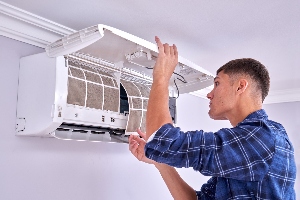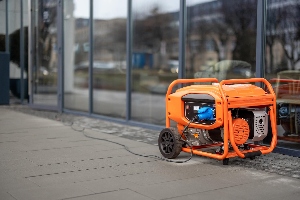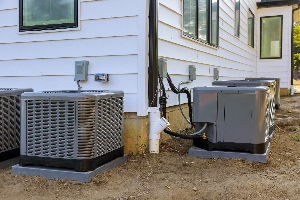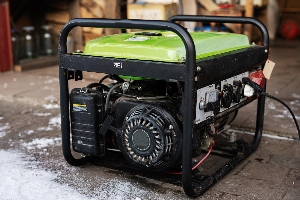The EPA Section 608 certification stands as a key requirement for HVAC technicians in the United States. Anyone who works with refrigerants must obtain this certification to legally handle, service, or dispose of these substances. This rule comes from the Clean Air Act and helps protect the environment.
Only qualified professionals can handle refrigerants safely. The Environmental Protection Agency created this certification program to ensure technicians know how to prevent harmful chemicals from escaping into the atmosphere. Getting certified shows employers and customers that you have the skills to work responsibly with these materials.
The certification process involves learning about different types of refrigerants, safety procedures, and proper handling methods. Technicians can earn one of four certification types based on the equipment they work with. Each type requires passing a test that covers specific knowledge areas.
Understanding EPA Certification
EPA Section 608 certification proves HVAC technicians can safely handle refrigerants. This federal requirement helps protect the environment and ensures proper handling of controlled substances.
Overview of Section 608
The Clean Air Act requires technicians who work with refrigerants to hold EPA Section 608 certification. This certification never expires or needs renewal. The exam consists of 25 multiple-choice questions for each certification level, and questions come from a pool of about 350 possible options.
Technicians must learn about ozone depletion, safety protocols, and proper refrigerant handling methods. The test covers recovery requirements, dehydration processes, and chemical safety procedures.
Significance of EPA Certification for HVAC Technicians
EPA certification is essential for career growth in the HVAC industry. Without it, technicians cannot legally handle refrigerants. Certified technicians can work on a wider range of equipment and take on more responsibilities. This leads to better job prospects and higher earning potential.
The certification also demonstrates professional expertise and commitment to environmental protection, and many employers require EPA certification before hiring HVAC technicians.
Types of EPA Certification
Type I Certification
- Small appliances with less than 5 pounds of refrigerant
- Common in residential units
- Basic recovery techniques
Type II Certification
- High and very high-pressure appliances
- Commercial refrigeration systems
- More complex recovery procedures
Type III Certification
- Low-pressure appliances
- Large chillers
- Specialized recovery methods
Universal Certification
- Includes all three types
- Most comprehensive option
- Highest level of certification
Key Requirements for Certification
The certification process requires passing the core section of the exam. This section tests basic knowledge of refrigerant handling. Technicians must choose which specific type(s) of certification they need based on their work. Each type requires passing an additional section of the exam.
The minimum passing score is 70% for each section. Study materials and practice tests help prepare for the exam. Test locations include trade schools, community colleges, and authorized testing centers, and many facilities offer both training and testing services.
Preparation and Testing for EPA Certification
Getting EPA certified takes focused studying and proper test preparation. The certification process includes studying core materials, taking practice tests, and passing the official exam.
Studying for the EPA 608 Exam
The best time to study is early morning when your mind is fresh. Break down the study material into small chunks and focus on one topic at a time. A good study guide will cover all essential topics for the Core section and your chosen Type (I, II, III, or Universal).
Pay special attention to safety protocols and environmental regulations, and create flashcards for key terms and refrigerant specifications. Set aside 2-3 hours daily for studying over several weeks.
Resource: Practice Tests and Training
Practice tests are vital tools for exam preparation, and many HVAC training programs and EPA-approved organizations offer online practice exams. Take multiple practice tests to get comfortable with the question format, focusing on areas where you score the lowest.
Free practice tests are also available through SkillCat and other training platforms, mirroring the actual exam structure.
Taking the Certification Test
The exam is administered by EPA-approved certifying organizations. You should bring two forms of ID and arrive 15 minutes early. The test includes multiple-choice questions on the Core section and your chosen Type certification.
Schedule your test for early to mid-morning when you're most alert and take short breaks if needed during the exam. Read each question carefully and mark unclear answers for review.
Obtaining the Certification Card
After passing the exam, you'll receive your EPA 608 certification card. Keep this card safe - it's valid for life and doesn't require renewal. The card shows your name, certification type, and unique certification number.
Make several copies of your card and store the original in a secure place. Digital copies are handy for job applications as most employers require a copy of this card before hiring.
Proper Handling and Compliance
Safe handling of refrigerants and compliance with EPA regulations protect both technicians and the environment. Following strict protocols prevents equipment damage, personal injury, and harmful emissions.
Refrigerant Handling and Safety
You must wear proper safety equipment when handling refrigerants, including goggles, gloves, and protective clothing. These substances can cause severe frostbite and injury if mishandled. Recovery equipment also needs regular maintenance and inspection before each use, checking for damaged hoses, faulty gauges, or worn seals.
Key Safety Rules:
- Never mix different refrigerant types
- Store cylinders upright in cool, dry areas
- Use approved recovery cylinders only
- Keep work areas well-ventilated
Leak Detection and Repair Protocols
Electronic leak detectors find refrigerant leaks quickly and accurately, and technicians will test all fittings, joints, and potential leak points systematically. Small appliances require bubble solution testing around suspected leak areas, while large systems need electronic scanning of all components.
Required Steps for Leak Repair:
- Locate the leak source
- Document leak location
- Fix the leak promptly
- Test the repair
- Monitor the system
Adhering to EPA Regulations and Standards
The EPA requires certified technicians to maintain detailed service records, this includes logging all refrigerant additions, recoveries, and disposal activities. Equipment must also meet EPA standards for recovery efficiency.
Recovery machines need certification labels and regular testing. Recovery rates vary by equipment type, typically 90% recovery for small appliances and 99% for larger systems when following proper procedures.
Compliance Requirements:
- Keep records for 3 years minimum
- Use EPA-approved recovery equipment
- Report refrigerant purchases
- Follow recovery procedures based on appliance type
- Maintain certification current
Learn more about the EPA Section 608 Certification here.













